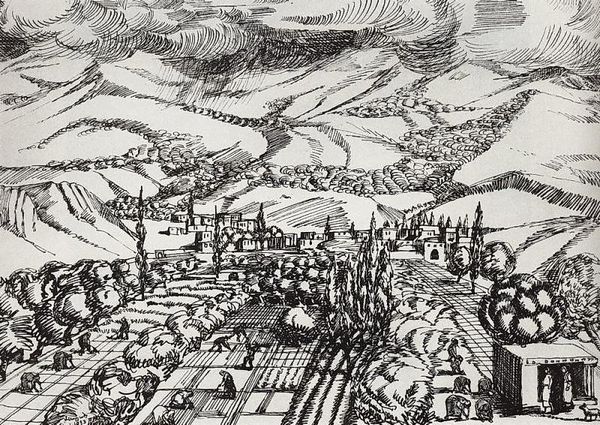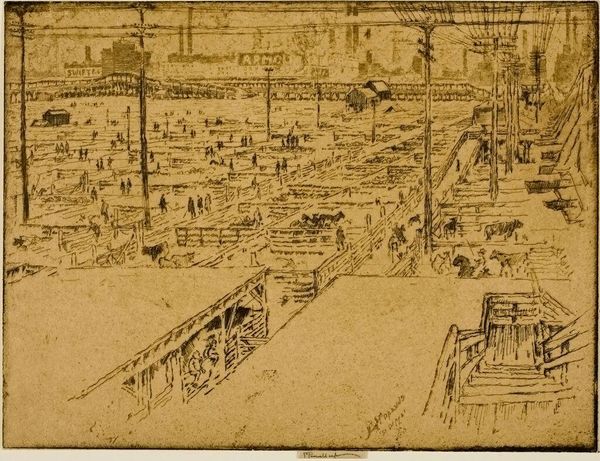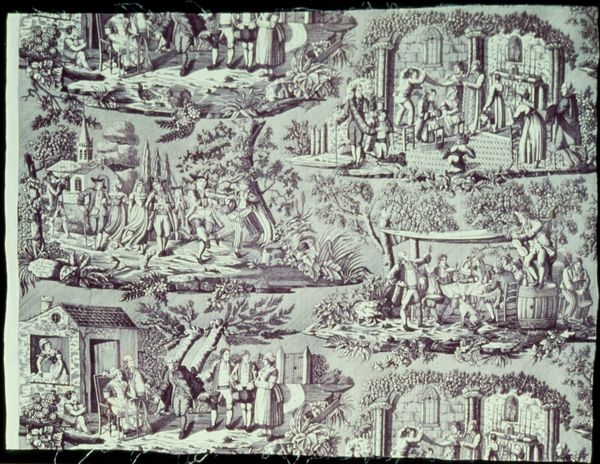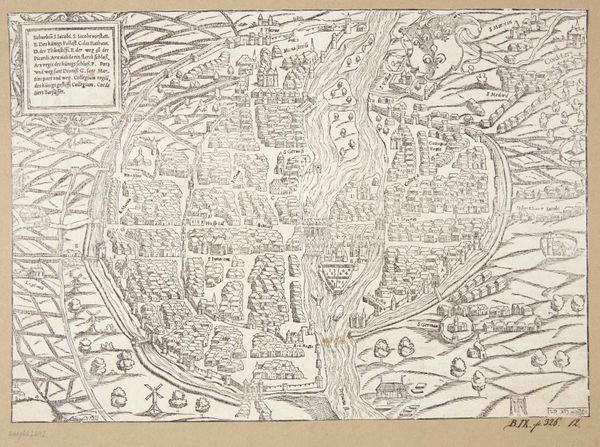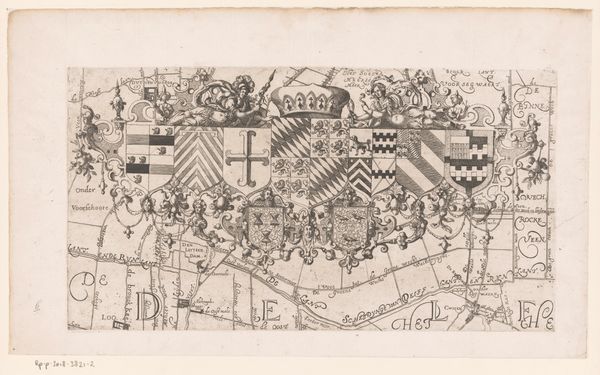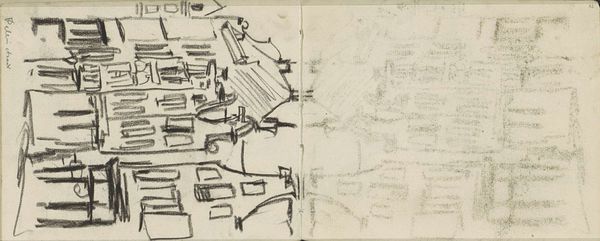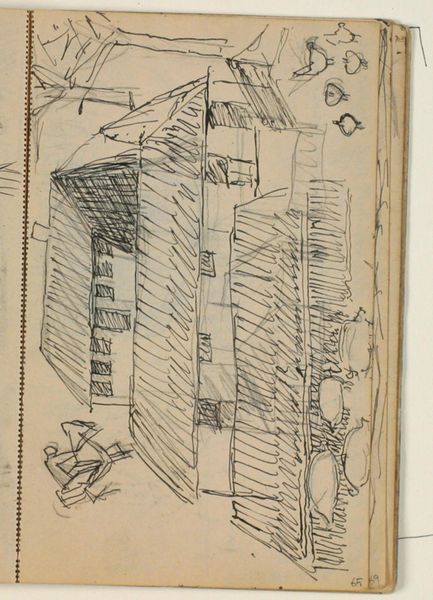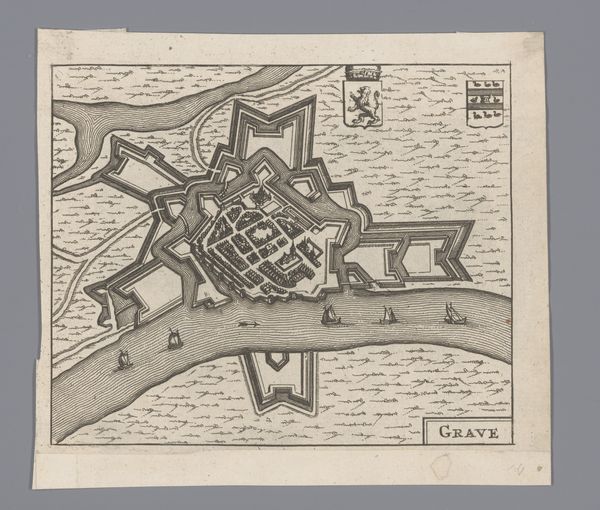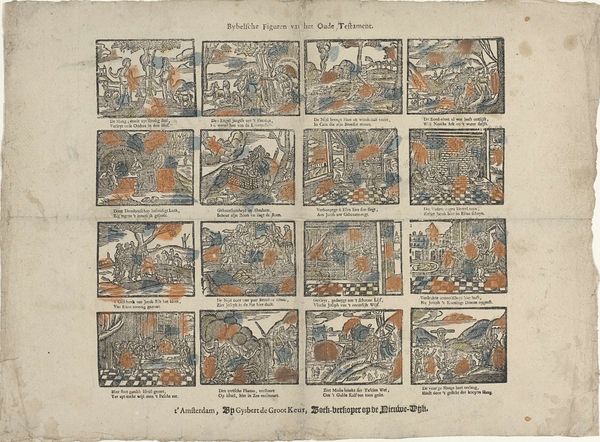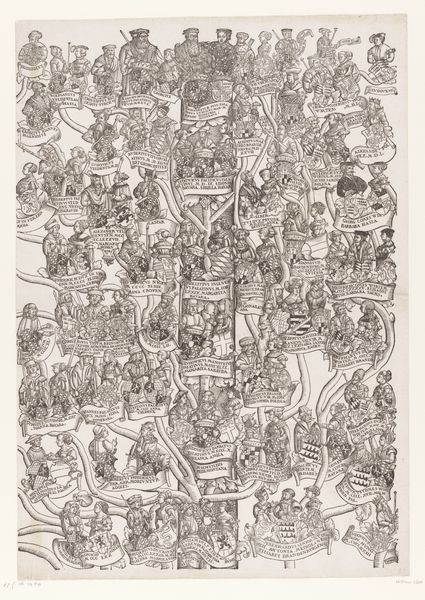
Copyright: Public domain
Curator: This watercolor piece, "Terem Dadon," was created by Konstantin Alexeevich Korovin in 1909. It is a captivating interior view, a peek inside a decorative space. Editor: My first impression is that this room seems very lively. The details feel rich despite the use of very simple materials—it has a folky charm. The ceiling grabs your attention right away, a complex geometric pattern that’s then overlaid with floral motifs. Curator: Yes, it speaks to the architectural revivals that were current during that time. We can see evidence here of engagement with craft and architectural structures and an almost theatrical staging that recalls Korovin’s stage design work. Editor: Absolutely, and look at the medium, it is watercolour, which usually allows for translucence. Yet, here, the bold, short strokes of paint and overlaid line-work bring an interesting materiality and density to the interior. There is an interesting intersection of so-called 'high art' and 'craft' on display. Curator: It's fascinating to consider the context of its creation—Russia at the beginning of the 20th century. The decorative style likely drew upon traditional Russian motifs, aligning with the era's interest in national identity. It makes me wonder, was it intended to showcase idealized Russian style in an era of change and potential societal disruption? Editor: That is an insightful point! Its creation may have been tied to preserving or exhibiting elements of Russian identity during turbulent social and political times, for both the creator and its viewers. This also begs the question about who made the actual ‘Terem’, the space shown in this watercolour: how skilled and celebrated was that individual? The division of artistic labor between painter and building creator may be the more telling detail. Curator: Agreed. It is so interesting how what first seems purely decorative then becomes something deeply anchored in both aesthetic preferences and the values held within a given community. Editor: Definitely! Korovin’s decision to capture this scene using what some may call everyday art supplies or simpler painting techniques offers much food for thought.
Comments
No comments
Be the first to comment and join the conversation on the ultimate creative platform.
